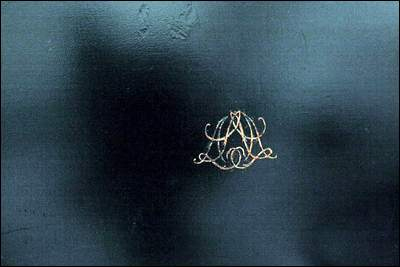![Jerry Hammes.com [Logo]](../../../images/logo.jpg)
|

|
Restored Lincoln Carriage - 2008
[Back to topic list] [Back to Studerbaker National Museum Topic] Tribune Photo/BARBARA ALLISON Tony Smith, curator of collections at Studebaker National Museum, displays the carriage that President Lincoln rode to Ford's Theatre on the night he was assassinated in April 1865. The carriage recently underwent a conservation process and will return to public display at the museum.  Tribune Photo/BARBARA ALLISON An ornate gold monogram featuring the initials of President Abraham Lincoln was uncovered during conservation work on the carriage that Lincoln rode to Ford's Theatre on the night he was assassinated. Restored Lincoln Carriage has returned to South Bend -Historic vehicle has undergone conservation, will be unveiled Friday. MARGARET FOSMOE Tribune Staff Writer SOUTH BEND -- After a year of conservation work, the stately carriage that conveyed President Abraham Lincoln to Ford's Theatre on the night he was assassinated has returned to Studebaker National Museum. The Lincoln Carriage will return to public display at a special event Friday. The carriage was made in 1864 by Wood Brothers of New York, an upscale carriage manufacturer of that era. The black barouche has a collapsible leather hood and fabric-covered padded seats. It is believed to have been presented as a gift by the Wood family to Lincoln in late 1864. Just a few months later, on April 14, 1865, Lincoln and his wife rode in the carriage to Ford's Theatre. During the play, John Wilkes Booth shot the president. He died the next day. The carriage's wood, leather and fabric were in various stages of deterioration when it was transported last year to B.R. Howard & Associates of Carlisle, Pa. The firm specializes in conservation of historic artifacts, mainly items owned by museums. The carriage went through a careful process designed to stabilize its condition and assure it can remain on public display, said Tony Smith, the museum's curator of collections. Conservation is not the same thing as restoration, said Brian Howard, of the B.R. Howard firm. Restoration typically involves major changes to an object to make it as similar as possible to its original appearance. With conservation, "you're not going to have a vehicle that looks new," Howard said. When it arrived at the workshop, the Lincoln Carriage was in "very poor condition," but not as the result of its many decades on display in South Bend, he said. Instead, the deterioration appeared to be mainly from its years of use by a New York physician who owned the vehicle after Lincoln's death, Howard said. "It was used vigorously," he said. The carriage was a very expensive, elegant vehicle for its day, Howard said. "This was high-end. In the auto world, it would be the Cadillac or the Lexus," he said. The conservation work turned up some surprises. Workers discovered the carriage originally wasn't black, but rather dark green with maroon, gold and white details. The conservators also carefully uncovered an elaborate cursive presidential monogram -- A.L. -- on each door. The monograms had been painted over. Work on the carriage cost about $30,000. It's part of $364,000 in conservation planned on eight historic vehicles at the museum. A Save America's Treasures grant of $168,900 will cover part of the cost, and the rest is being raised through private donations. "We've raised about $60,000 at this point," Smith said. After Lincoln's death, the carriage was inherited by his son, Robert Todd Lincoln. It later was sold to the physician, F.B. Brewer, of New York. Clement Studebaker, one of the founders of the Studebaker carriage company, purchased the carriage from Brewer in 1889. For years, the Lincoln Carriage was displayed at the Studebaker Carriage Repository in Chicago. The carriage eventually was moved to South Bend and displayed in the Studebaker Corp. headquarters. It occasionally was driven in parades. The carriage was part of a collection of Studebaker-owned vehicles given to the city of South Bend in 1969. The museum has a contract to manage the city's collection. |
 |
 |
 |
 |
 |
 |
 |
 |